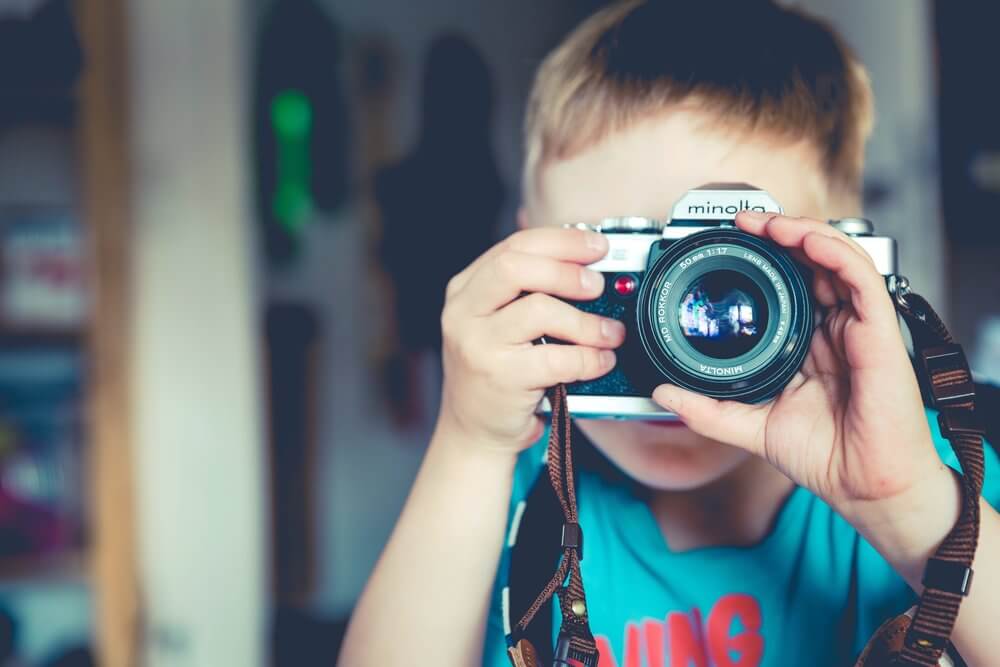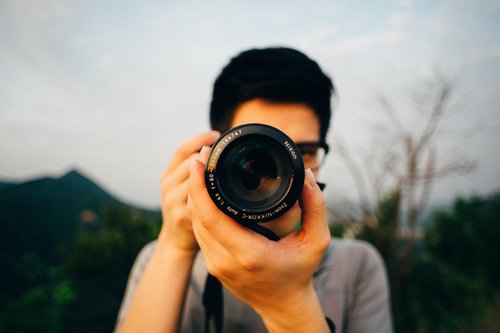How to Educate Reluctant Learners with Digital Photography
Many parents who home educate their children are concerned about motivating their reluctant learners. Children sometimes have slumps that result from too much of the same routine or simple subject fatigue.
Another worksheet just will not work. Parents need something to grab the attention of their child. They need something that will get their child moving with new learning.
The answer is as close as your digital camera and your computer. The child who is not fascinated by cameras and computers is just rare. Almost no child can resist taking pictures.
And, even fewer can resist looking at their own pictures on the computer. But, regardless of what the subject matter is every child likes to use a camera. Digital Photography can provide the magic that propels your child to greater achievement though strong motivation to do their work in an intriguing way.
All subjects can utilize digital photography as a hook to encourage learning. For example, one of the first questions a child has to deal with in learning the human aspect of geography is why a town developed in a particular place. Those reasons have to do with the presence of food sources, water, possibilities for transportation, means of trade and ways to construct shelter.
Encourage your child to create a project that documents all these criteria as they relate to the place where you live. Have the child do the proper research first. This may mean a few trips to the library, local museums or, even better, interviews with people who have spent their whole lives in a town or city. Tour the area while observing with a fresh outlook. Take your child out to document each one of the components of the social and cultural structure of your town.
Rivers and streams would certainly be included in the project. Much of the movement of goods took place on rivers in the developing United States. Careful observation of local forests will reveal the food sources that were used in the early years of settlement.
Many towns have demonstration farms or festivals that demonstrate the early years of their history. Be sure to photograph early buildings that have been preserved as examples of shelter. Document the materials that were used to build cabins and shelters. Photograph the furnishings in the house. Those materials probably came from the forest bordering the homes.

When the photography is done then transfer all the photographs to the computer. When the photos are on the hard drive the possibilities are limitless. PowerPoint presentations can be produced. Posters, brochures and illustrated booklets can be made with the pictures.
The pictures can be uploaded to any of the many photo storage sites that can be found on the web. Reports can be generated. Posters can be made. Brochures can be composed. And, perhaps you might want to go for the gold and let your child write a book using any of the various self publishing sites available.
Science lends itself perfectly to a photographic approach. A trip to the zoo can result in photographs of most of the classifications of animals. Botanical gardens can provide rich resources for plant anatomy and insect biology.
A child who would never want to pick various types of leaves to glue to a poster board will jump at the chance to photograph the types of leaves. Who knows, your child may be the first to write a guidebook to the trees of a local park.
Photographing the growth of a plant provides opportunities to focus on a long term project. Learning the parts of a plant becomes an intriguing project when the child produces a threefold brochure with pictures taken in the wild. The same can be said about photographing the growth of a puppy, pet lizard or a pet bird.
But what can you do with Language Arts? Try illustrating a story written by the child.
Some children will do anything to get into the limelight. Suggest that they act out and photograph the major parts of a classic of literature. Poetry lends itself beautifully to photography. A wonderful project for a child to do is to make a “motivational poster” with a photograph that appropriately illustrates a concept.
This approach is almost perfect for developing vocabulary skills. The work can be as simple as illustrating the words dog and cat. Or, it can be as complex as illustrating concepts such as honesty, betrayal or hope. A child learning a second language can use photographs to produce a custom vocabulary presentation.
Imagine for a moment that your young child is learning to count. What a young child can do with a camera is amazing. Have the child do a booklet showing numbers of different things up to the goal number. Perhaps you would like the child to learn to count to one hundred.
A booklet or slide presentation could be done showing different numbered items such as one cat, two dogs, three spoons, and so on. Or a project could be done that shows what one hundred objects look like. One hundred beans could be photographed.
Then one hundred toothpicks might be arranged in some entertaining way. The possibilities are limited only by the imagination. Presentation programs make wonderful final projects as well as using a presentation to make a movie with a simple movie editing program.
Other things that lend themselves to mathematics might be searching out in the local environment any shape such as squares, triangles, rectangles and polygons. These shapes are present in nature and in architecture. Acute angles, obtuse angles and right angles might be searched out by the young photographer.
An older child could produce a booklet showing the geometric shapes found in nature. There are other mathematical challenges that can be tackled. What do one hundred pencils look like when arranged in a stack? What about photographing one thousand toothpicks? Can a child photograph one million things? What about trying to photograph ten million things?
Cover Photo by Markus Spiske on Unsplash
2Bridges Productions Copyright © 2017. Address: 25 Monroe St, New York, NY 10002. Phone: 516-659-7074 – All Rights Reserved.
We are a participant in the Amazon Services LLC Associates Program, an affiliate advertising program designed to provide a means for us to earn fees by linking to Amazon.com and affiliated sites.






